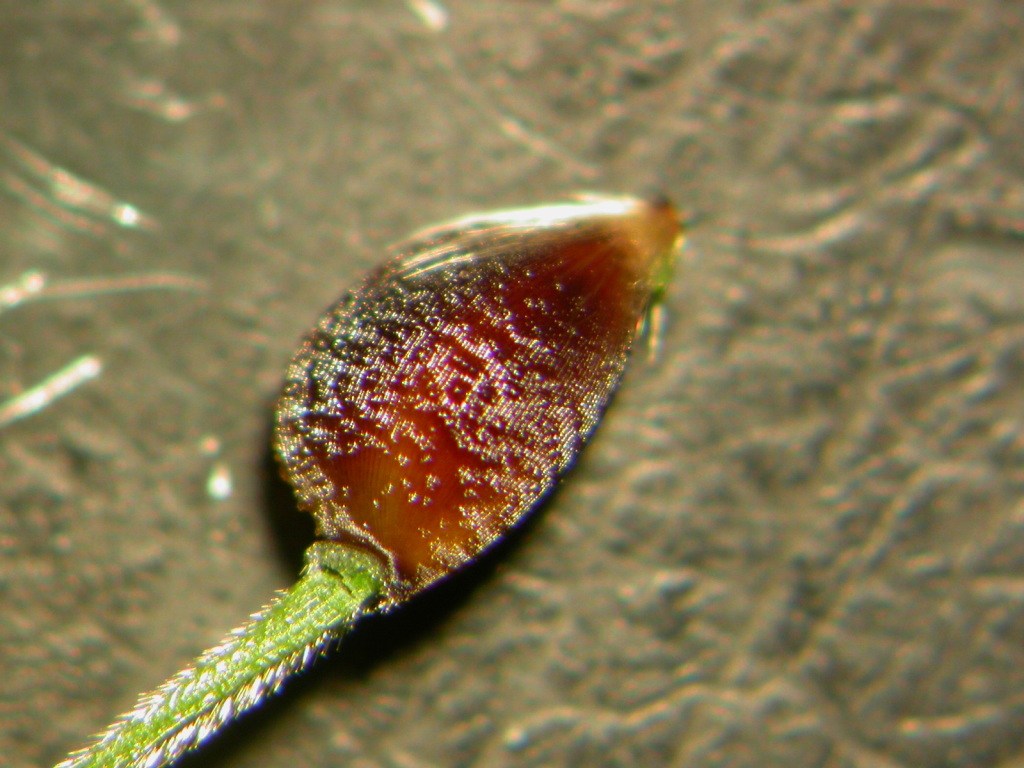Piptochaetium uruguense
Griseb.Densely tufted perennial to c. 70 cm high. Leaf-blades glabrous or with scattered short, stilff hairs, loosely to closely inrolled, c. 0.5 mm diam.(1 mm when flattened); sheaths glabrous; ligules firmly membranous, obtuse, c. 1 mm long. Inflorescence a rather dense, contracted panicle, to 7 × 1 cm, relatively few-flowered. Glumes 4–7 mm long, 3–5-nerved, subequal, broad and inflated around the lemma, shortly to long-acuminate, purplish when young; lemma obliquely obovoid, 3–4 mm long, laterally compressed but plump, finely longitudinally ridged, tuberculate at least in the apical half, dark brown at maturity; corona c. 0.3 mm long, and c. 0.7 mm wide, with a series of minute (0.1 mm) spines and sometimes a few hairs (to 0.3 mm), callus very short, with pale hairs to c. 2 mm long, blunt; awn bigeniculate, 10–17 mm long, scabrous-pubescent, twisting in the lower half, finally deciduous. Flowers Nov. (1 record)
VVP. Currently known in Australia only from a Themeda triandra-dominated grassland reserve in the northern Melbourne suburb of Reservoir, collected in 2004.
Eradication measures were being implemented at the site in 2004, but it is not known if some plants have persisted and/or spread beyond the original infestation. The original population consisted of some 300 plants. The plants resprouted after burning.
 Spinning
Spinning